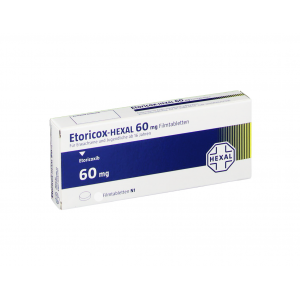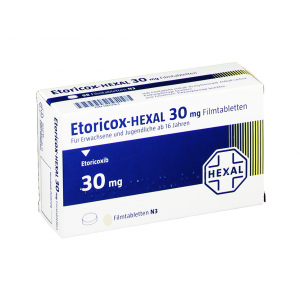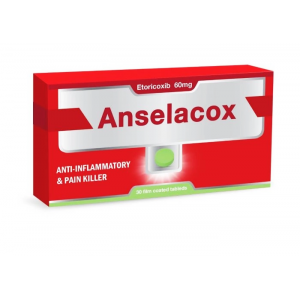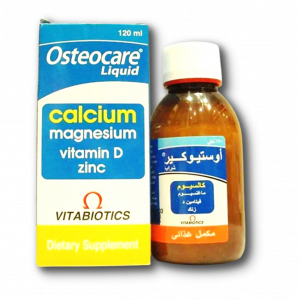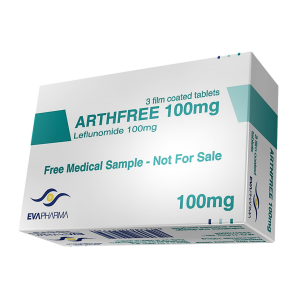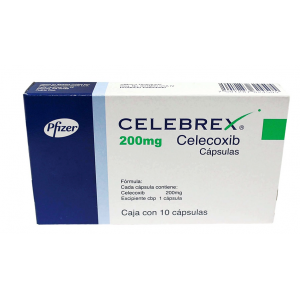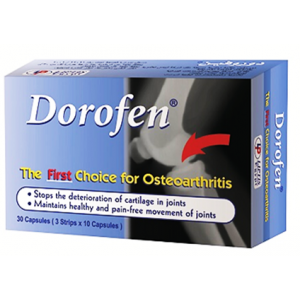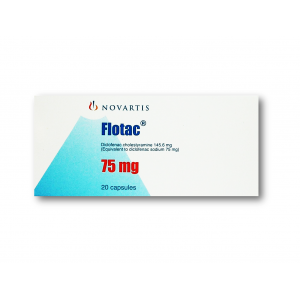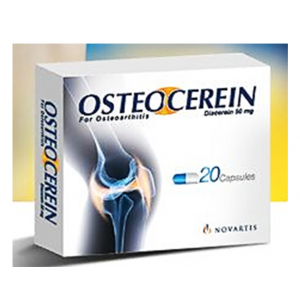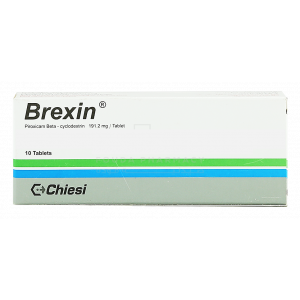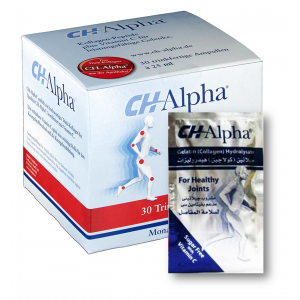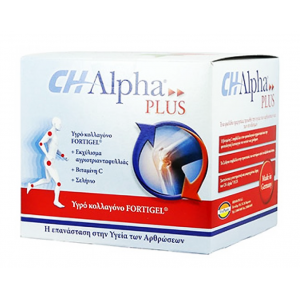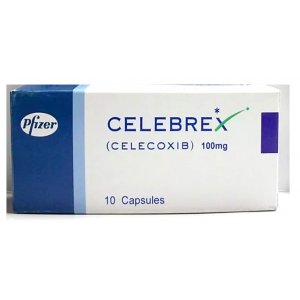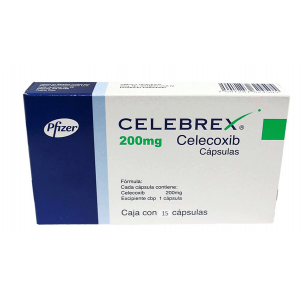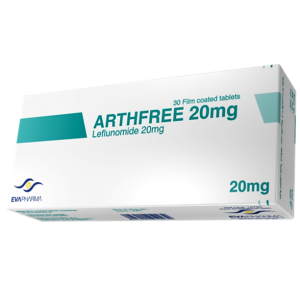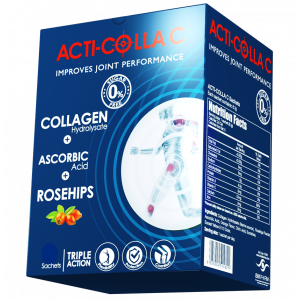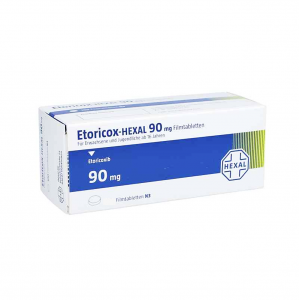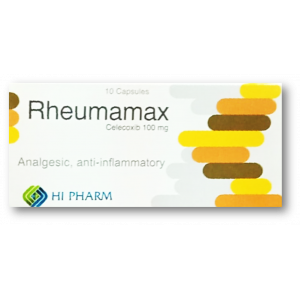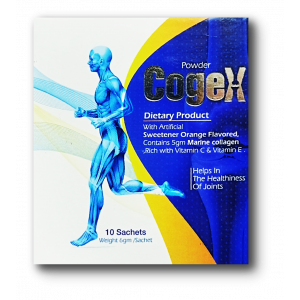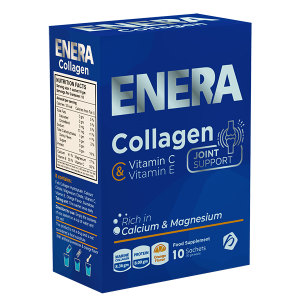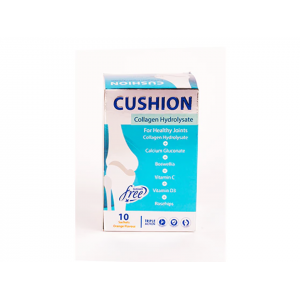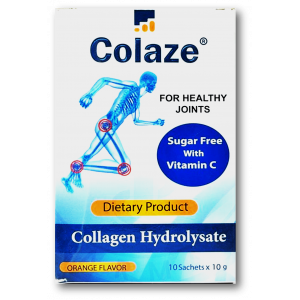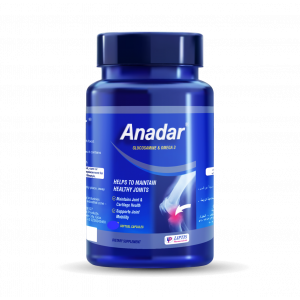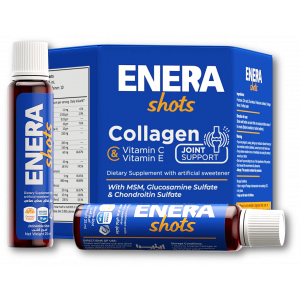- Anti-hestaminic & Respiratory Drugs (20)
- Anti-inflammatory Drugs (192) +-
- Baby & Mom (1287) +-
- Baby & Mom > Bath, skin & Hair > Skin Care > wibes (52)
- Beauty (2772) +-
- Beauty > Skin Care > whitening (274)
- Chemotherapy & Immune Response (865) +-
- Chemotherapy & Immune Response > ANTI-FUNGAL (11)
- Chemotherapy & Immune Response > Chemotherapeutic Agents > Hormone Antagonists >Enzyme Inhibitors (284)
- CIRCULATORY DISTURBANCE AGENTS (23)
- Diet & Fitness Products (275) +-
- DRUG AFFECTING CENTRAL NERVOUS SYSTEM (191)
- HEMATOLOGY (39)
-
Medical Supplies (502)
+-
- Chemicals & Disinfectants (19)
- Dental Supplies (32)
- Devices & Instruments (10)
- Diabetic Supplies (119)
- General Medical Supplies (21)
- I.V & Medical Solution (0)
- Intensive Care Unit & Anesthesia Supplies (0)
- KIDNEY UNIT SUPPLIES (21)
- Lab Supplies (3)
- Miscellaneous (21)
- Neonatal Unit Supplies (0)
- Operation Room Supplies (2)
- Sanitary (5)
- Sterilization Supplies (0)
- Surgical Sutures (4)
- Syringes (3)
-
Medicines & Health (2554)
+-
- Allergy & Sinus (94)
- Children's Health Care (51)
- Cough, Cold & Flu (273)
- Digestive Health & Nausea (224)
- Ear, Nose & Throat Care (177)
- Eye Care (116)
- Feminine Care (323)
- Foot Care (4)
- Orthopaedic Appliances (0)
- Pain Relief & Management (237)
- Pill Organizer (2)
- Skin Treatments (751)
- Sleep & Snoring Aids (2)
- Support & Braces (6)
- Medicines & health > Gout releif (42)
- Natural & Organic Products (81) +-
- OTC > Analgesics > Anti-inflammatory Drugs (44)
-
Personal Care (3104)
+-
- Bath & Body (256)
- Deodorant & Anti-perspirants (180)
- Ear, Nose & Throat Care (173)
- Eye Care (122)
- Feminine Care (372)
- Foot Care (12)
- Hair Care (419)
- Home Tests & Monitorings (14)
- Incontinence (7)
- Lip Care (22)
- Massage & Relaxation (17)
- Natural & Organic Personal Care (7)
- Oral Care (89)
- Pregnancy & Fertility (64)
- Shaving & Grooming (65)
- Sun Care (68)
-
Prescription Drugs (2836)
+-
- Analgesics (181)
- Cardiovascular System (373)
- Drugs Affecting Musculoskeletal System (65)
- Drugs Used In Infections (55)
- Ear & Nose Drugs (2)
- Endocrine System (172)
- Gastrointestinal Tract (240)
- Gastrointestinal Tract > Hepatology > Liver treatment (61)
- GYNECOLOGY (2)
- Miscellaneous (11)
- NEPHROLOGY > URINARY SYSTEM > RENAL DISORDERS > URINARY TRACT DISORDERS (46)
- NEUROLOGY (220)
- Nutrients & Blood Electrolytes (2)
- Respiratory System (150)
- SKIN > NAILS > HAIR > TOPICAL PREPARATIONS (51)
- Vaccines (1)
- Prescription drugs > Cardiovascular system > Anti-hypertension drugs (242)
- Sexual Wellness (296) +-
- Vitamins & Minerals Supplements (1180) +-
Ex Tax: 224EGP
Example
You can return the product within 14 days of purchase.
ReturnsYou can return the product within 14 days of purchase.

ARCOXIA ® 60 mg ( etoricoxib ) 14 film-coated tablets
1. Name of the medicinal product
ARCOXIA® 30 mg film-coated tablets\
ARCOXIA® 60 mg film-coated tablets
ARCOXIA® 90 mg film-coated tablets
ARCOXIA® 120 mg film-coated tablets
2. Qualitative and quantitative composition
Each film-coated tablet contains 30, 60, 90 or 120 mg of etoricoxib.
Excipients with known effect:
30 mg tablet: 1.3 mg lactose (as monohydrate)
60 mg tablet: 2.7 mg lactose (as monohydrate)
90 mg tablet: 4.0 mg lactose (as monohydrate)
120 mg tablet: 5.3 mg lactose (as monohydrate)
For the full list of excipients, see section 6.1.
3. Pharmaceutical form
Film-coated tablets (tablets).
30 mg tablets: Blue-green, apple-shaped biconvex tablets debossed '101' on one side and 'ACX 30' on the other side.
60 mg tablets: Dark green, apple-shaped, biconvex tablets debossed '200' on one side and 'ARCOXIA 60' on the other side.
90 mg tablets: White, apple-shaped, biconvex tablets debossed '202' on one side and 'ARCOXIA 90' on the other side.
120 mg tablets: Pale-green, apple-shaped, biconvex tablets debossed '204' on one side and 'ARCOXIA 120' on the other side.
4. Clinical particulars
4.1 Therapeutic indications
ARCOXIA is indicated in adults and adolescents 16 years of age and older for the symptomatic relief of osteoarthritis (OA), rheumatoid arthritis (RA), ankylosing spondylitis, and the pain and signs of inflammation associated with acute gouty arthritis.
ARCOXIA is indicated in adults and adolescents 16 years of age and older for the short-term treatment of moderate pain associated with dental surgery.
The decision to prescribe a selective COX-2 inhibitor should be based on an assessment of the individual patient's overall risks (see sections 4.3, 4.4).
4.2 Posology and method of administration
Posology
As the cardiovascular risks of etoricoxib may increase with dose and duration of exposure, the shortest duration possible and the lowest effective daily dose should be used. The patient's need for symptomatic relief and response to therapy should be re-evaluated periodically, especially in patients with osteoarthritis (see sections 4.3, 4.4, 4.8 and 5.1).
Osteoarthritis
The recommended dose is 30 mg once daily. In some patients with insufficient relief from symptoms, an increased dose of 60 mg once daily may increase efficacy. In the absence of an increase in therapeutic benefit, other therapeutic options should be considered.
Rheumatoid arthritis
The recommended dose is 60 mg once daily. In some patients with insufficient relief from symptoms, an increased dose of 90 mg once daily may increase efficacy. Once the patient is clinically stabilised, down-titration to a 60 mg once daily dose may be appropriate. In the absence of an increase in therapeutic benefit, other therapeutic options should be considered.
Ankylosing spondylitis
The recommended dose is 60 mg once daily. In some patients with insufficient relief from symptoms, an increased dose of 90 mg once daily may increase efficacy. Once the patient is clinically stabilised, down-titration to a 60 mg once daily dose may be appropriate. In the absence of an increase in therapeutic benefit, other therapeutic options should be considered.
Acute pain conditions
For acute pain conditions, etoricoxib should be used only for the acute symptomatic period.
Acute gouty arthritis
The recommended dose is 120 mg once daily. In clinical trials for acute gouty arthritis, etoricoxib was given for 8 days.
Postoperative dental surgery pain
The recommended dose is 90 mg once daily, limited to a maximum of 3 days. Some patients may require other postoperative analgesia in addition to ARCOXIA during the three day treatment period.
Doses greater than those recommended for each indication have either not demonstrated additional efficacy or have not been studied. Therefore:
The dose for OA should not exceed 60 mg daily.
The dose for RA and ankylosing spondylitis should not exceed 90 mg daily.
The dose for acute gout should not exceed 120 mg daily, limited to a maximum of 8 days treatment.
The dose for postoperative acute dental surgery pain should not exceed 90 mg daily, limited to a maximum of 3 days.
Special populations
Elderly patients
No dosage adjustment is necessary for elderly patients. As with other drugs, caution should be exercised in elderly patients (see section 4.4).
Patients with hepatic impairment
Regardless of indication, in patients with mild hepatic dysfunction (Child-Pugh score 5-6) a dose of 60 mg once daily should not be exceeded. In patients with moderate hepatic dysfunction (Child-Pugh score 7-9), regardless of indication, the dose of 30 mg once daily should not be exceeded.
Clinical experience is limited particularly in patients with moderate hepatic dysfunction and caution is advised. There is no clinical experience in patients with severe hepatic dysfunction (Child-Pugh score ≥10); therefore, its use is contra-indicated in these patients (see sections 4.3, 4.4 and 5.2).
Patients with renal impairment
No dosage adjustment is necessary for patients with creatinine clearance ≥30 ml/min (see section 5.2). The use of etoricoxib in patients with creatinine clearance <30 ml/min is contra-indicated (see sections 4.3 and 4.4).
Paediatric population
Etoricoxib is contra-indicated in children and adolescents under 16 years of age (see section 4.3).
Method of administration
ARCOXIA is administered orally and may be taken with or without food. The onset of the effect of the medicinal product may be faster when ARCOXIA is administered without food. This should be considered when rapid symptomatic relief is needed.
4.3 Contraindications
• Hypersensitivity to the active substance or to any of the excipients listed in section 6.1.
• Active peptic ulceration or active gastro-intestinal (GI) bleeding.
• Patients who, after taking acetylsalicylic acid or NSAIDs including COX-2 (cyclooxygenase-2) inhibitors, experience bronchospasm, acute rhinitis, nasal polyps, angioneurotic oedema, urticaria, or allergic-type reactions.
• Pregnancy and lactation (see sections 4.6 and 5.3).
• Severe hepatic dysfunction (serum albumin <25 g/l or Child-Pugh score ≥10).
• Estimated renal creatinine clearance <30 ml/min.
• Children and adolescents under 16 years of age.
• Inflammatory bowel disease.
• Congestive heart failure (NYHA II-IV).
• Patients with hypertension whose blood pressure is persistently elevated above 140/90 mmHg and has not been adequately controlled.
• Established ischaemic heart disease, peripheral arterial disease, and/or cerebrovascular disease.
4.4 Special warnings and precautions for use
Gastrointestinal effects
Upper gastrointestinal complications [perforations, ulcers or bleedings (PUBs)], some of them resulting in fatal outcome, have occurred in patients treated with etoricoxib.
Caution is advised with treatment of patients most at risk of developing a gastrointestinal complication with NSAIDs; the elderly, patients using any other NSAID or acetylsalicylic acid concomitantly or patients with a prior history of gastrointestinal disease, such as ulceration and GI bleeding.
There is a further increase in the risk of gastrointestinal adverse effects (gastrointestinal ulceration or other gastrointestinal complications) when etoricoxib is taken concomitantly with acetylsalicylic acid (even at low doses). A significant difference in GI safety between selective COX-2 inhibitors + acetylsalicylic acid vs. NSAIDs + acetylsalicylic acid has not been demonstrated in long-term clinical trials (see section 5.1).
Cardiovascular effects
Clinical trials suggest that the selective COX-2 inhibitor class of drugs may be associated with a risk of thrombotic events (especially myocardial infarction (MI) and stroke), relative to placebo and some NSAIDs. As the cardiovascular risks of etoricoxib may increase with dose and duration of exposure, the shortest duration possible and the lowest effective daily dose should be used. The patient's need for symptomatic relief and response to therapy should be re-evaluated periodically, especially in patients with osteoarthritis (see sections 4.2, 4.3, 4.8 and 5.1).
Patients with significant risk factors for cardiovascular events (e.g. hypertension, hyperlipidaemia, diabetes mellitus, smoking) should only be treated with etoricoxib after careful consideration (see section 5.1).
COX-2 selective inhibitors are not a substitute for acetylsalicylic acid for prophylaxis of cardiovascular thrombo-embolic diseases because of their lack of antiplatelet effect. Therefore antiplatelet therapies should not be discontinued (see sections above, 4.5 and 5.1.).
Renal effects
Renal prostaglandins may play a compensatory role in the maintenance of renal perfusion. Therefore, under conditions of compromised renal perfusion, administration of etoricoxib may cause a reduction in prostaglandin formation and, secondarily, in renal blood flow, and thereby impair renal function. Patients at greatest risk of this response are those with pre-existing significantly impaired renal function, uncompensated heart failure, or cirrhosis. Monitoring of renal function in such patients should be considered.
Fluid retention, oedema and hypertension
As with other medicinal products known to inhibit prostaglandin synthesis, fluid retention, oedema and hypertension have been observed in patients taking etoricoxib. All Nonsteroidal Anti-inflammatory Drugs (NSAIDs), including etoricoxib, can be associated with new onset or recurrent congestive heart failure. For information regarding a dose related response for etoricoxib see section 5.1. Caution should be exercised in patients with a history of cardiac failure, left ventricular dysfunction, or hypertension and in patients with pre-existing oedema from any other reason. If there is clinical evidence of deterioration in the condition of these patients, appropriate measures including discontinuation of etoricoxib should be taken.
Etoricoxib may be associated with more frequent and severe hypertension than some other NSAIDs and selective COX-2 inhibitors, particularly at high doses. Therefore, hypertension should be controlled before treatment with etoricoxib (see section 4.3) and special attention should be paid to blood pressure monitoring during treatment with etoricoxib. Blood pressure should be monitored within two weeks after initiation of treatment and periodically thereafter. If blood pressure rises significantly, alternative treatment should be considered.
Hepatic effects
Elevations of alanine aminotransferase (ALT) and/or aspartate aminotransferase (AST) (approximately three or more times the upper limit of normal) have been reported in approximately 1% of patients in clinical trials treated for up to one year with etoricoxib 30, 60 and 90 mg daily.
Any patients with symptoms and/or signs suggesting liver dysfunction, or in whom an abnormal liver function test has occurred, should be monitored. If signs of hepatic insufficiency occur, or if persistently abnormal liver function tests (three times the upper limit of normal) are detected, etoricoxib should be discontinued.
General
If during treatment, patients deteriorate in any of the organ system functions described above, appropriate measures should be taken and discontinuation of etoricoxib therapy should be considered. Medically appropriate supervision should be maintained when using etoricoxib in the elderly and in patients with renal, hepatic, or cardiac dysfunction.
Caution should be used when initiating treatment with etoricoxib in patients with dehydration. It is advisable to rehydrate patients prior to starting therapy with etoricoxib.
Serious skin reactions, some of them fatal, including exfoliative dermatitis, Stevens-Johnson syndrome, and toxic epidermal necrolysis, have been reported very rarely in association with the use of NSAIDs and some selective COX-2 inhibitors during post-marketing surveillance (see section 4.8). Patients appear to be at highest risk for these reactions early in the course of therapy with the onset of the reaction occurring in the majority of cases within the first month of treatment. Serious hypersensitivity reactions (such as anaphylaxis and angioedema) have been reported in patients receiving etoricoxib (see section 4.8). Some selective COX-2 inhibitors have been associated with an increased risk of skin reactions in patients with a history of any drug allergy. Etoricoxib should be discontinued at the first appearance of skin rash, mucosal lesions, or any other sign of hypersensitivity.
Etoricoxib may mask fever and other signs of inflammation.
Caution should be exercised when co-administering etoricoxib with warfarin or other oral anticoagulants (see section 4.5).
The use of etoricoxib, as with any medicinal product known to inhibit cyclooxygenase / prostaglandin synthesis, is not recommended in women attempting to conceive (see sections 4.6, 5.1, and 5.3).
ARCOXIA tablets contain lactose. Patients with rare hereditary problems of galactose intolerance, the Lapp lactase deficiency or glucose-galactose malabsorption should not take this medicine.
4.5 Interaction with other medicinal products and other forms of interaction
Pharmacodynamic interactions
Oral anticoagulants: In subjects stabilised on chronic warfarin therapy, the administration of etoricoxib 120 mg daily was associated with an approximate 13% increase in prothrombin time International Normalised Ratio (INR). Therefore, patients receiving oral anticoagulants should be closely monitored for their prothrombin time INR, particularly in the first few days when therapy with etoricoxib is initiated or the dose of etoricoxib is changed (see section 4.4).
Diuretics, ACE inhibitors and Angiotensin II Antagonists: NSAIDs may reduce the effect of diuretics and other antihypertensive drugs. In some patients with compromised renal function (e.g. dehydrated patients or elderly patients with compromised renal function) the co-administration of an ACE inhibitor or Angiotensin II antagonist and agents that inhibit cyclo-oxygenase may result in further deterioration of renal function, including possible acute renal failure, which is usually reversible. These interactions should be considered in patients taking etoricoxib concomitantly with ACE inhibitors or angiotensin II antagonists. Therefore, the combination should be administered with caution, especially in the elderly. Patients should be adequately hydrated and consideration should be given to monitoring of renal function after initiation of concomitant therapy, and periodically thereafter.
Acetylsalicylic Acid: In a study in healthy subjects, at steady state, etoricoxib 120 mg once daily had no effect on the anti-platelet activity of acetylsalicylic acid (81 mg once daily). Etoricoxib can be used concomitantly with acetylsalicylic acid at doses used for cardiovascular prophylaxis (low-dose acetylsalicylic acid). However, concomitant administration of low-dose acetylsalicylic acid with etoricoxib may result in an increased rate of GI ulceration or other complications compared to use of etoricoxib alone. Concomitant administration of etoricoxib with doses of acetylsalicylic acid above those for cardiovascular prophylaxis or with other NSAIDs is not recommended (see sections 5.1 and 4.4.).
Cyclosporin and tacrolimus: Although this interaction has not been studied with etoricoxib, coadministration of cyclosporin or tacrolimus with any NSAID may increase the nephrotoxic effect of cyclosporin or tacrolimus. Renal function should be monitored when etoricoxib and either of these drugs is used in combination.
Pharmacokinetic interactions
The effect of etoricoxib on the pharmacokinetics of other drugs
Lithium: NSAIDs decrease lithium renal excretion and therefore increase lithium plasma levels. If necessary, monitor blood lithium closely and adjust the lithium dosage while the combination is being taken and when the NSAID is withdrawn.
Methotrexate: Two studies investigated the effects of etoricoxib 60, 90 or 120 mg administered once daily for seven days in patients receiving once-weekly methotrexate doses of 7.5 to 20 mg for rheumatoid arthritis. Etoricoxib at 60 and 90 mg had no effect on methotrexate plasma concentrations or renal clearance. In one study, etoricoxib 120 mg had no effect, but in the other study, etoricoxib 120 mg increased methotrexate plasma concentrations by 28% and reduced renal clearance of methotrexate by 13%. Adequate monitoring for methotrexate-related toxicity is recommended when etoricoxib and methotrexate are administered concomitantly.
Oral contraceptives: Etoricoxib 60 mg given concomitantly with an oral contraceptive containing 35 micrograms ethinyl estradiol (EE) and 0.5 to 1 mg norethindrone for 21 days increased the steady state AUC0-24hr of EE by 37%. Etoricoxib 120 mg given with the same oral contraceptive concomitantly or separated by 12 hours, increased the steady state AUC0-24hr of EE by 50 to 60%. This increase in EE concentration should be considered when selecting an oral contraceptive for use with etoricoxib. An increase in EE exposure can increase the incidence of adverse events associated with oral contraceptives (e.g., venous thrombo-embolic events in women at risk).
Hormone Replacement Therapy (HRT): Administration of etoricoxib 120 mg with hormone replacement therapy consisting of conjugated estrogens (0.625 mg PREMARINTM) for 28 days, increased the mean steady state AUC0-24hr of unconjugated estrone (41%), equilin (76%), and 17-β-estradiol (22%). The effect of the recommended chronic doses of etoricoxib (30, 60, and 90 mg) has not been studied. The effects of etoricoxib 120 mg on the exposure (AUC0-24hr) to these estrogenic components of PREMARIN were less than half of those observed when PREMARIN was administered alone and the dose was increased from 0.625 to 1.25 mg. The clinical significance of these increases is unknown, and higher doses of PREMARIN were not studied in combination with etoricoxib. These increases in estrogenic concentration should be taken into consideration when selecting post-menopausal hormone therapy for use with etoricoxib because the increase in oestrogen exposure might increase the risk of adverse events associated with HRT.
Prednisone/prednisolone: In drug-interaction studies, etoricoxib did not have clinically important effects on the pharmacokinetics of prednisone/prednisolone.
Digoxin: Etoricoxib 120 mg administered once daily for 10 days to healthy volunteers did not alter the steady-state plasma AUC0-24hr or renal elimination of digoxin. There was an increase in digoxin Cmax (approximately 33%). This increase is not generally important for most patients. However, patients at high risk of digoxin toxicity should be monitored for this when etoricoxib and digoxin are administered concomitantly.
Effect of etoricoxib on drugs metabolised by sulfotransferases
Etoricoxib is an inhibitor of human sulfotransferase activity, particularly SULT1E1, and has been shown to increase the serum concentrations of ethinyl estradiol. While knowledge about effects of multiple sulfotransferases is presently limited and the clinical consequences for many drugs are still being examined, it may be prudent to exercise care when administering etoricoxib concurrently with other drugs primarily metabolised by human sulfotransferases (e.g., oral salbutamol and minoxidil).
Effect of etoricoxib on drugs metabolised by CYP isoenzymes
Based on in vitro studies, etoricoxib is not expected to inhibit cytochromes P450 (CYP) 1A2, 2C9, 2C19, 2D6, 2E1 or 3A4. In a study in healthy subjects, daily administration of etoricoxib 120 mg did not alter hepatic CYP3A4 activity as assessed by the erythromycin breath test.
Effects of other drugs on the pharmacokinetics of etoricoxib
The main pathway of etoricoxib metabolism is dependent on CYP enzymes. CYP3A4 appears to contribute to the metabolism of etoricoxib in vivo. In vitro studies indicate that CYP2D6, CYP2C9, CYP1A2 and CYP2C19 also can catalyse the main metabolic pathway, but their quantitative roles have not been studied in vivo.
Ketoconazole: Ketoconazole, a potent inhibitor of CYP3A4, dosed at 400 mg once a day for 11 days to healthy volunteers, did not have any clinically important effect on the single-dose pharmacokinetics of 60 mg etoricoxib (43% increase in AUC).
Voriconazole and Miconazole: Co-administration of either oral voriconazole or topical miconazole oral gel, strong CYP3A4 inhibitors, with etoricoxib caused a slight increase in exposure to etoricoxib, but is not considered to be clinically meaningful based on published data.
Rifampicin: Co-administration of etoricoxib with rifampicin, a potent inducer of CYP enzymes, produced a 65% decrease in etoricoxib plasma concentrations. This interaction may result in recurrence of symptoms when etoricoxib is co-administered with rifampicin. While this information may suggest an increase in dose, doses of etoricoxib greater than those listed for each indication have not been studied in combination with rifampicin and are therefore not recommended (see section 4.2).
Antacids: Antacids do not affect the pharmacokinetics of etoricoxib to a clinically relevant extent.
4.6 Fertility, pregnancy and lactation
Pregnancy
No clinical data on exposed pregnancies are available for etoricoxib. Studies in animals have shown reproductive toxicity (see section 5.3). The potential for human risk in pregnancy is unknown. Etoricoxib, as with other medicinal products inhibiting prostaglandin synthesis, may cause uterine inertia and premature closure of the ductus arteriosus during the last trimester. Etoricoxib is contraindicated in pregnancy (see section 4.3). If a woman becomes pregnant during treatment, etoricoxib must be discontinued.
Breastfeeding
It is not known whether etoricoxib is excreted in human milk. Etoricoxib is excreted in the milk of lactating rats. Women who use etoricoxib must not breast feed (see sections 4.3 and 5.3).
Fertility
The use of etoricoxib, as with any drug substance known to inhibit COX-2, is not recommended in women attempting to conceive.
4.7 Effects on ability to drive and use machines
Patients who experience dizziness, vertigo or somnolence while taking etoricoxib should refrain from driving or operating machinery.
4.8 Undesirable effects
Summary of the safety profile
In clinical trials, etoricoxib was evaluated for safety in 9,295 individuals, including 6,757 patients with OA, RA, chronic low back pain or ankylosing spondylitis (approximately 600 patients with OA or RA were treated for one year or longer).
In clinical studies, the undesirable effects profile was similar in patients with OA or RA treated with etoricoxib for one year or longer.
In a clinical study for acute gouty arthritis, patients were treated with etoricoxib 120 mg once daily for eight days. The adverse experience profile in this study was generally similar to that reported in the combined OA, RA, and chronic low back pain studies.
In a cardiovascular safety outcomes programme of pooled data from three active comparator controlled trials, 17, 412 patients with OA or RA were treated with etoricoxib (60 mg or 90 mg) for a mean duration of approximately 18 months. The safety data and details from this programme are presented in section 5.1.
In clinical studies for acute postoperative dental pain following surgery including 614 patients treated with etoricoxib (90 mg or 120 mg), the adverse experience profile in these studies was generally similar to that reported in the combined OA, RA, and chronic low back pain studies.
Tabulated list of adverse reactions
The following undesirable effects were reported at an incidence greater than placebo in clinical trials in patients with OA, RA, chronic low back pain or ankylosing spondylitis treated with etoricoxib 30 mg, 60 mg or 90 mg up to the recommended dose for up to 12 weeks; in the MEDAL Programme studies for up to 3½ years; in short term acute pain studies for up to 7 days; or in post-marketing experience (see Table 1):
Table 1:
System Organ Class
Adverse Reactions
Frequency Category*
Infections and infestations
alveolar osteitis
Common
gastroenteritis, upper respiratory infection, urinary tract infection
Uncommon
Blood and lymphatic system disorders
anaemia (primarily associated with gastrointestinal bleeding), leukopenia, thrombocytopenia
Uncommon
Immune system disorders
hypersensitivity‡ ß
Uncommon
angioedema/anaphylactic /anaphylactoid reactions including shock‡
Rare
Metabolism and nutrition disorders
oedema/fluid retention
Common
appetite increase or decrease, weight gain
Uncommon
Psychiatric disorders
anxiety, depression, mental acuity decreased, hallucinations‡
Uncommon
confusion‡, restlessness‡
Rare
Nervous system disorders
dizziness, headache
Common
dysgeusia, insomnia, paresthaesia/hypaesthesia, somnolence
Uncommon
Eye disorders
blurred vision, conjunctivitis
Uncommon
Ear and labyrinth disorders
tinnitus, vertigo
Uncommon
Cardiac disorders
palpitations, arrhythmia‡
Common
atrial fibrillation, tachycardia‡, congestive heart failure, non-specific ECG changes, angina pectoris‡, myocardial infarction§
Uncommon
Vascular disorders
hypertension
Common
flushing, cerebrovascular accident§, transient ischaemic attack, hypertensive crisis‡, vasculitis‡
Uncommon
Respiratory, thoracic and mediastinal disorders
bronchospasm‡
Common
cough, dyspnoea, epistaxis
Uncommon
Gastrointestinal disorders
abdominal pain
Very common
Constipation, flatulence, gastritis, heartburn/acid reflux, diarrhea, dyspepsia/epigastric discomfort, nausea, vomiting, oesophagitis, oral ulcer
Common
abdominal distention, bowel movement pattern change, dry mouth, gastroduodenal ulcer, peptic ulcers including gastrointestinal perforation and bleeding, irritable bowel syndrome, pancreatitis‡
Uncommon
Hepatobiliary disorders
ALT increased, AST increased
Common
hepatitis‡
Rare
hepatic failure‡, jaundice‡
Rare†
Skin and subcutaneous tissue disorders
ecchymosis
Common
facial oedema, pruritus, rash, erythema‡, urticaria‡
Uncommon
Stevens-Johnson syndrome‡, toxic epidermal necrolysis‡, fixed drug eruption‡
Rare†
Musculoskeletal and connective tissue disorders
muscular cramp/spasm, musculoskeletal pain/stiffness
Uncommon
Renal and urinary disorders
proteinuria, serum creatinine increased, renal failure/renal insufficiency‡(see section 4.4)
Uncommon
General disorders and administration site conditions
asthenia/fatigue, flu-like disease
Common
chest pain
Uncommon
Investigations
blood urea nitrogen increased, creatine phosphokinase increased, hyperkalaemia, uric acid increased
Uncommon
blood sodium decreased
Rare
*Frequency Category: Defined for each Adverse Experience Term by the incidence reported in the clinical trials data base: Very Common (≥1/10), Common (≥1/100 to <1/10), Uncommon (≥1/1000 to <1/100), Rare (≥1/10,000 to <1/1000), Very Rare (<1/10,000).
‡ This adverse reaction was identified through post-marketing surveillance. Its reported frequency has been estimated based upon the highest frequency observed across clinical trial data pooled by indication and approved dose.
†The frequency category of “Rare” was defined per the Summary of Product Characteristics (SmPC) guidance (rev. 2, Sept 2009) on the basis of an estimated upper bound of the 95% confidence interval for 0 events given the number of subjects treated with ARCOXIA in the analysis of the Phase III data pooled by dose and indication (n=15,470).
ß Hypersensitivity includes the terms “allergy”, “drug allergy”, “drug hypersensitivity”, “hypersensitivity”, “hypersensitivity NOS”, “hypersensitivity reaction” and “nonspecific allergy”.
§Based on analyses of long-term placebo and active controlled clinical trials, selective COX-2 inhibitors have been associated with an increased risk of serious thrombotic arterial events, including myocardial infarction and stroke. The absolute risk increase for such events is unlikely to exceed 1% per year based on existing data (uncommon).
The following serious undesirable effects have been reported in association with the use of NSAIDs and cannot be ruled out for etoricoxib: nephrotoxicity including interstitial nephritis and nephrotic syndrome.
Reporting of suspected adverse reactions
Reporting suspected adverse reactions after authorisation of the medicinal product is important. It allows continued monitoring of the benefit/risk balance of the medicinal product. Healthcare professionals are asked to report any suspected adverse reactions via the Yellow Card Scheme at: www.mhra.gov.uk/yellowcard
4.9 Overdose
In clinical studies, administration of single doses of etoricoxib up to 500 mg and multiple doses up to 150 mg/day for 21 days did not result in significant toxicity. There have been reports of acute overdosage with etoricoxib, although adverse experiences were not reported in the majority of cases. The most frequently observed adverse experiences were consistent with the safety profile for etoricoxib (e.g. gastrointestinal events, cardiorenal events).
In the event of overdose, it is reasonable to employ the usual supportive measures, e.g., remove unabsorbed material from the GI tract, employ clinical monitoring, and institute supportive therapy, if required.
Etoricoxib is not dialysable by haemodialysis; it is not known whether etoricoxib is dialysable by peritoneal dialysis.
6. Pharmaceutical particulars
6.1 List of excipients
Core:
Calcium hydrogen phosphate (anhydrous)
Croscarmellose sodium
Magnesium stearate
Microcrystalline cellulose
Tablet coating:
Carnauba wax
Lactose monohydrate
Hypromellose
Titanium dioxide (E171)
Triacetin
The 30-, 60- and 120-mg tablets also contain indigo carmine lake (E132) and yellow ferric oxide (E172).
6.2 Incompatibilities
Not applicable.
6.3 Shelf life
3 years.
6.4 Special precautions for storage
Bottles: Keep the container tightly closed in order to protect from moisture.
Blisters: Store in the original package in order to protect from moisture.
6.5 Nature and contents of container
30 mg
Aluminium/aluminium blisters in packs containing 2, 7, 14, 20, 28, 49, 98 tablets or multi-packs containing 98 (2 packs of 49) tablets.
60 mg
Aluminium/aluminium blisters in packs containing 2, 5, 7, 10, 14, 20, 28, 30, 50, 84, 98, 100 tablets or multi-packs containing 98 (2 packs of 49) tablets.
90 and 120 mg
Aluminium/aluminium blisters in packs containing 2, 5, 7, 10, 14, 20, 28, 30, 50, 84, 100 tablets or multi-packs containing 98 (2 packs of 49) tablets.
60, 90 and 120 mg
Aluminium/aluminium blisters (unit doses) in packs of 5, 50 or 100 tablets.
White, round, HDPE bottles with a white, polypropylene closure containing 30 tablets and two 1-gram desiccant containers or 90 tablets and one 1-gram desiccant container.
Not all pack sizes may be marketed.
6.6 Special precautions for disposal and other handling
No special requirements.
Any unused medicinal product or waste material should be disposed of in accordance with local requirements.
7. Marketing authorisation holder
Merck Sharp & Dohme Limited
Hertford Road, Hoddesdon, Hertfordshire EN11 9BU, UK
8. Marketing authorisation number(s)
30 mg Tablets
PL 00025/0641
60 mg Tablets
PL 00025/0642
90 mg Tablets
PL 00025/0643
120 mg Tablets
PL 00025/0644
9. Date of first authorisation/renewal of the authorisation
Date of latest renewal: 30 mg Tablets
22/10/2007
Date of latest renewal: 60 mg Tablets
13/02/2002
Date of latest renewal: 90 mg Tablets
13/02/2002
Date of latest renewal: 120 mg Tablets
13/02/2002
10. Date of revision of the text
09 September 2019
LEGAL CATEGORY
POM
© Merck Sharp & Dohme Limited 2019. All rights reserved.
SPC.ACX.19.UK.6891.MAH
Write a review
Your Name:Your Review: Note: HTML is not translated!
Rating: Bad Good
Enter the code in the box below:


